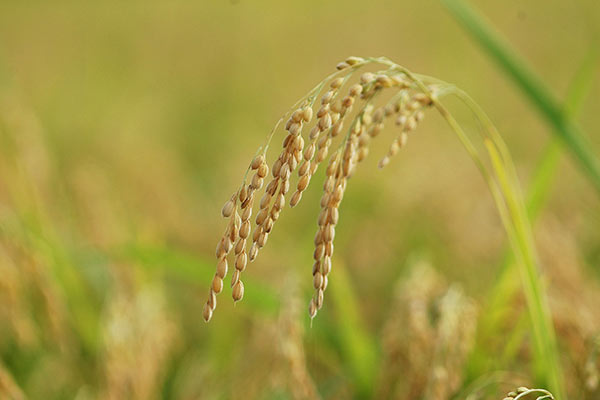Using Wild Ancestor Plants to Make Rice More Resilient to Increasingly Unpredictable Water Availability

Researchers have developed commercial varieties of rice carrying different segments of DNA from wild ancestors, and are testing how they perform in real agricultural conditions in the field in India to identify the most drought resistant varieties.
Context
Rice is the staple food for more than two billion people, but a quarter of global rice production relies on rainfall rather than irrigation, so is vulnerable to the increased frequency of droughts and flooding predicted under climate change. There is an urgent need to develop rice strains that are both drought and submersion tolerant but current commercial strains have limited genetic diversity from which to generate increased environmental resilience.
Aims and objectives
By the end of the project the international SCPRID Resilient Rice research team aimed to produce improved varieties of rice that maintain their yield in environmentally challenging conditions such as drought or floods, and to have these new varieties accepted and adopted by local communities in rain-fed areas of India. They also aimed to produce new breeding tools and associated training of India based staff and students to enable rapid further development of new rice varieties by Indian researchers. The vision was for the benefits of the research to reach those people who need them and not only lead to improved food security for poorer subsistence farmers in India, but also help lift them out of poverty.
Findings and outcomes
The team achieved the following impacts:
- Training and capacity building in quality assurance and genotyping for Indian researchers – improving the availability of the latest technologies for sample tracking and molecular breeding in India and training researchers in their use is now having substantial impacts on the effective implementation of molecular breeding of rice varieties with high yield, submergence tolerance and drought tolerance for India.
- Developing farmer engagement – farmers from distinct rain-fed rice producing regions were engaged and contributed to the approaches taken in our project, and particularly the selection of breeding material that acted as donors for improvement. Farmers also increased awareness and were trained in the adoption of drought tolerant varieties and the benefits of using these compared to varieties adopted for paddy field production.
- Testing models of the impact of climate change on future rice production - maps of "at-risk" areas in India under climate change scenarios have been produced and the impacts of increasing drought conditions on yield in these areas has been modelled. These achievements are now well placed to inform and advise both public and private organisations on the impact of climate change on rice production and what can be done to mitigate against such risk.
- In March 2018 the National Rice Research Institute, Cuttack, India, confirmed that 'we have successfully introgressed and fixed wild segments into popular rice variety' thus confirming the longer term impact of this project on the ongoing breeding programme for improved drought tolerance in India
Project activities and publications
- Judith Mitchell (Project Coordinator)
Principal Investigator
- Prof Ian Graham FRS (Department of Biology, University of York)
Co-Investigators
- Prof Sue Hartley (Department of Biology, University of York)
- Prof Jane Hill (Department of Biology, University of York)
- Prof Phil Ineson (Department of Biology, University of York)
- Dr Samarthia Thankappan (Department of Environment and Geography, University of York)
- Dr Sushanta Kumar Dash (National Rice Research Institute-India)
- Dr Padmini Swain (National Rice Research Institute-India)
- Dr Lambodar Behera (National Rice Research Institute-India)
- Dr Biswanath Sadangi (National Rice Research Institute-India)
- Professor Susan McCouch (Cornell University-USA)
This work was funded by the Biotechnology and Biological Sciences Research Council, the Department for International Development and (through a grant to BBSRC) the Bill and Melinda Gates Foundation, under the Sustainable Crop Production Research for International Development (SCPRID) programme, a joint initiative with the Indian Council of Agricultural Research and the Department of Biotechnology of the Government of India's Ministry of Science and Technology.
- National Rice Research Institute (India)
- Cornell University (USA)
The team included scientists in the Centre for Novel Agricultural Products (CNAP) and in the York Environmental Sustainability Institute (YESI), both based at the University of York, as well as overseas collaborators.